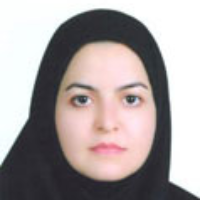Petrography, origin and magmatic evolution of Khunrang intrusive complex, northwest of Jiroft, Kerman
Author(s):
Abstract:
Khunrang intrusive complex, as a one of the largest complexes in the southern part of the Sanandaj-Sirjan zone, is located at northwest of Jiroft, in Kerman province. The complex mainly consists of acidic-intermediate rocks such as diorite, quartzdiorite, tonalite, granodiorite, and granite with subordinate amounts of mafic members such as hornblende gabbro and microgabbro. Field studies together with mineralogical and geochemical evidence show that the Khunrang intrusive complex belongs to calc-alkaline series and its felsic members are metaluminous to weakly peraluminous which display features typical of I-type granites. On the primitive mantle-normalized spider diagrams, all mafic and felsic samples are enriched in LILE (such as Rb, Cs and K) and depleted in Ti, Ta and Nb which is a main characteristic of subduction-related magmas. Based on geochemical data, the mafic rocks seems to be formed by melting of metasomatised mantle wedge; whereas felsic rocks are formed by melting of lower crust metabasic rocks as a result of the injection of mantle derived mafic magmas. It can be concluded that the Khunrang intrusive complex was formed in a volcanic arc setting due to subduction of the Neotethys oceanic crust beneath the Central Iranian Micro-continent in the Middle-Jurassic time.
Keywords:
Language:
Persian
Published:
Geosciences Scientific Quarterly Journal, Volume:26 Issue: 102, 2017
Pages:
207 to 220
https://magiran.com/p1672297
سامانه نویسندگان
مقالات دیگری از این نویسنده (گان)
-
Petrography, geochemistry, and tectonic setting of intrusive bodies of the Seridune deposit, northeast of Sarcheshmeh mine, Kerman Province, with an emphasis on Seridune porphyry intrusive body
Mahdieh Bamorovat, *, Mohsen Arvin, Alireza Shaker, Majid Aminzadeh
Petrology,



